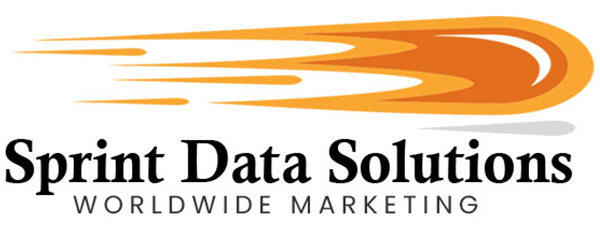Trike Owners Are A New & Growing Market
America, as one of the younger nations in the global historical timeline, benefited greatly from the timing of its development. This relatively late start allowed it to grow in tandem with modern innovations, particularly in infrastructure. Among the most impactful of these advancements is the country’s vast and well-planned network of roads and highways. Stretching from coast to coast, this system has for decades enabled Americans to travel not only to work or school but also across state lines and entire regions with ease and independence.
This freedom of movement has become a hallmark of American life, shaping everything from daily routines to national culture. At the heart of this automotive legacy is the motorcycle—an enduring symbol of open roads, personal liberty, and a spirit of adventure. Today, the motorcycle landscape is expanding with the growing popularity of trike motorcycles, which offer a unique combination of stability, comfort, and performance. These three-wheeled vehicles appeal to a broader demographic, including older riders and those seeking greater safety without sacrificing the thrill of the ride.
This shift in consumer interest marks not only a cultural evolution but also a lucrative opportunity for businesses seeking to enter or expand within this niche. From accessories and apparel to insurance and travel services, the trike motorcycle market represents a new frontier of demand. Sprint Data Solutions Worldwide Marketing is already positioned at the forefront of this trend, offering targeted marketing strategies and data-driven solutions to help businesses effectively reach and engage this emerging customer base. By anticipating market needs and leveraging precise consumer data, Sprint Data Solutions ensures its clients stay ahead in this evolving industry.

What Is A Trike Motorcycle?
As the name suggests, a trike motorcycle shares the core characteristics of a traditional motorcycle but distinguishes itself by incorporating three wheels instead of the usual two. The wheel configuration can vary based on the manufacturer or the rider’s preference: some models feature two wheels in the front with one at the rear (a “reverse trike” design), while others opt for a more classic setup of one wheel at the front and two at the back. This tri-wheel design offers enhanced stability, especially at low speeds or when cornering, making it an attractive alternative for riders seeking a safer or more comfortable ride.
The concept of a motorized three-wheel vehicle is not a recent invention. In fact, its roots trace back to the 19th century, a time of intense innovation when engineers experimented with a wide range of vehicle formats before the industry standardized around the now-common two- and four-wheeled layouts. The modern revival of the trike gained momentum in the early 21st century when motorcycle enthusiasts and custom builders began modifying existing motorcycles into three-wheeled configurations. These conversions quickly caught on due to their unique aesthetic and practical appeal. Responding to growing interest, Harley-Davidson—the iconic American motorcycle manufacturer—entered the market in 2009 by launching its own factory-produced trike model. This move validated the trike as more than a niche curiosity and opened the door for mainstream acceptance.
Since then, other major manufacturers have followed suit, recognizing the demand for more stable and accessible alternatives to traditional motorcycles. Trikes have found a dedicated following, especially among older riders and those with physical limitations, due to their improved balance, reduced risk of tipping, and overall ease of use. While two-wheeled motorcycles still dominate the market, trike motorcycles are becoming an increasingly prominent segment, offering a blend of traditional motorcycling thrill with added comfort and safety.
The Trike Difference
Trikes, or three-wheeled motorcycles, are not designed with aesthetics alone in mind—their defining third wheel serves a crucial functional purpose: enhanced stability. Unlike traditional two-wheeled motorcycles that require constant balance from the rider, trikes offer a self-supporting upright stance, much like automobiles. This design significantly reduces the risk of tipping over at low speeds or while stationary, making them particularly appealing to a broader range of riders. The trike’s configuration eliminates the need for riders to use core strength and coordination to maintain balance, simplifying the riding experience, especially for those less physically agile.
Initially, trikes were predominantly built as custom modifications by small workshops catering to motorcycle enthusiasts who faced new physical limitations. Aging riders or those recovering from accidents often found themselves physically unable to handle a two-wheeled motorcycle but were unwilling to give up the freedom and thrill of the open road. The trike emerged as a natural solution, preserving the sensory experience of motorcycle riding—wind, engine rumble, and exposure to the environment—without the balancing challenge. It also offered a safer and more approachable entry point for novices new to riding vehicles with fewer than four wheels.
Over time, as demand grew beyond niche communities, larger manufacturers began to recognize the commercial potential of trikes. Companies like Harley-Davidson and Can-Am observed that trikes were not only retaining seasoned riders but also attracting younger or less traditional customers looking for a distinctive riding experience with fewer barriers. These vehicles appealed to individuals seeking comfort, safety, and a more stable ride without sacrificing the excitement of motorcycle travel. Modern iterations, such as the Polaris Slingshot, take the concept even further, blending elements of sports cars and motorcycles. With features like side-by-side seating, automotive steering, and open cockpits, they broaden the appeal of three-wheeled vehicles while still being classified legally as motorcycles in many jurisdictions.
In essence, the evolution of the trike from custom solution to mainstream product represents a convergence of innovation, accessibility, and lifestyle appeal. What began as an adaptive vehicle for the mobility-impaired has become a legitimate and increasingly popular segment of the powersports industry, offering a bridge between motorcycles and cars for a diverse array of riders.
Who Is The Market?
The demographic of trike users often overlaps significantly with that of motorcycle riders, as both groups tend to value open-road experiences, a sense of freedom, and the thrill of riding. However, the appeal of trikes is growing beyond traditional motorcycle enthusiasts. Trikes are attracting a broader market that includes individuals seeking greater stability, comfort, or accessibility in their rides. This includes older riders who may no longer feel confident balancing a two-wheeled motorcycle, individuals with physical limitations, and even new riders who are drawn to the ease of use that trikes offer. In many cases, the trike market is expanding due to the versatility and safety it provides, making it an increasingly attractive option for a diverse range of riders.
Elderly Riders
Trikes originally gained popularity among motorcycle enthusiasts looking for a more stable alternative to two-wheeled bikes, and that market continues to thrive today. In the United States, motorcycles have long been woven into the cultural fabric, symbolizing freedom, rebellion, and adventure. Many of today’s senior citizens were once passionate motorcyclists who spent their younger years cruising the open road. However, with age often comes challenges such as reduced balance, limited strength, or joint issues that make traditional motorcycle riding risky or unfeasible. Trikes address these concerns by offering a three-wheeled design that eliminates the need for constant balancing and complex counter steering, while still delivering the exhilarating, open-air riding experience that riders cherish.
This evolution has given rise to a rapidly growing demographic of older adults who are not ready to give up the riding lifestyle but need accommodations to do so safely and comfortably. As a result, an expanding market is emerging, specifically tailored to the needs of senior riders. This includes not only custom-designed trikes with ergonomic features but also accessories like adaptive riding gear, upgraded seating, and enhanced suspension systems for smoother rides. Moreover, services such as senior-friendly rider training, guided tour groups, and maintenance plans are beginning to target this demographic. Together, these developments are reshaping the landscape of motorcycle culture, ensuring that age is no longer a barrier to the freedom of the road.

Disabled Riders
For individuals with certain disabilities, operating a traditional vehicle can be challenging or outright impossible—particularly for those who are blind. However, many people with physical disabilities, including wheelchair users, amputees, and those with limited mobility in one or more limbs, can still enjoy the freedom of personal transportation with some modifications. While standard motorcycles require balance, strength, and coordination, making them impractical for many disabled individuals, motor trikes present a viable and empowering alternative. These three-wheeled vehicles retain the exhilaration and open-road experience of motorcycles while offering enhanced stability and ease of use.
One of the primary advantages of motor trikes is their inherent stability—riders don’t need to balance the vehicle when stopped or turning, and there’s no requirement for complex counter-steering techniques. This makes them particularly suitable for those with mobility challenges, limited lower-limb function, or balance impairments. In addition, motor trikes can be heavily customized to accommodate a wide range of physical needs. For instance, traditional foot-operated controls like the clutch, gear shifter, and rear brake can be relocated to the handlebars for hand operation. Some models also feature automatic transmissions, push-button gear shifting, and throttle assist systems. These modifications allow riders to control all aspects of the vehicle without needing to rely on lower-body strength or dexterity.
Ultimately, motor trikes offer more than just a mode of transportation—they restore a sense of independence, autonomy, and the thrill of the open road to those who might otherwise be excluded. For many disabled riders, a trike isn’t just a vehicle; it’s a gateway to freedom and a more inclusive riding experience.
People Who Don’t Like Motorcycles
An unexpected development in the motor trike market is the growing number of new riders who likely would never have considered operating a traditional motorcycle. For many individuals, the balance, coordination, and heightened risk associated with two-wheeled motorcycles can be intimidating, even off-putting. Motor trikes, with their enhanced stability and safety, offer a compelling alternative that bridges the gap between motorcycles and automobiles. Some advanced models go even further, featuring car-like seating, seatbelts, and steering wheels, creating an experience closer to that of a compact, three-wheeled convertible. These designs typically still require a motorcycle license, but they eliminate many of the barriers associated with conventional motorcycle riding.This shift is significantly broadening the rider demographic beyond the traditional profile often associated with motorcycle enthusiasts. It opens the door to older adults, those with mobility concerns, or even cautious drivers looking for an open-air experience without the full risk of motorcycling. This expanding consumer base presents valuable opportunities for marketers, manufacturers, and service providers. The more diverse a customer group becomes, the greater the variety of products, accessories, and marketing strategies that can be introduced to meet their unique needs and interests. Sprint Data Solutions Worldwide Marketing is uniquely positioned to help businesses capitalize on this trend, offering access to targeted consumer data and refined marketing campaigns to reach these emerging audiences effectively.
Who Is Sprint Data Solutions Worldwide Marketing?
Sprint Data Solutions Worldwide Marketing is a proudly American-owned business, founded on the values of service, resilience, and dedication. Established by a disabled veteran who honorably served the United States, the company was born from a powerful desire to continue serving the nation—this time through the engine of economic growth. Drawing from a background in national defense and strategic operations, the founder recognized the transformative potential of targeted marketing in empowering businesses. With a deep commitment to supporting American enterprises, Sprint Data Solutions set out to bridge the gap between companies and their most essential lifeline: customers. Today, the organization leverages innovative data-driven marketing solutions to help businesses of all sizes expand their reach, increase profitability, and build lasting customer relationships—fueling not just commerce, but the spirit of American entrepreneurship.
Established in the dynamic city of Las Vegas, Nevada, the company began its journey by supporting local enterprises in reaching broader markets. From the outset, Sprint Data Solutions emphasized quality, integrity, and personalized client service, values that drove consistent results and earned the trust of its growing client base. Over time, the company evolved from a modest start-up into a formidable player in the marketing space, now backed by a team whose collective expertise exceeds 50 years in both traditional and digital marketing disciplines.
Entering the marketing world during the twilight of traditional media dominance, Sprint Data Solutions recognized the untapped potential of data-driven strategies. With initial roots in direct mail marketing, the company developed robust capabilities in database acquisition, management, and analytics—skills that later became indispensable with the rise of digital marketing. As the digital revolution gained momentum, Sprint’s readiness and adaptability gave it a first-mover advantage. By integrating digital services early on, the company not only stayed ahead of industry trends but also empowered its clients to thrive in the rapidly evolving marketing landscape.
The company’s growth trajectory extended far beyond its Nevada origins. What began as a state-focused service soon expanded to cover all 50 U.S. states, including Alaska and Hawaii. This domestic success laid the foundation for international outreach. Sprint Data Solutions now serves clients across North America—including Canada and Mexico—and has expanded its footprint into the European Union. From local campaigns to global marketing initiatives, the company offers comprehensive support that helps businesses grow wherever opportunity calls, including major markets like France, Germany, and beyond.
Headquartered in the thriving business landscape of Las Vegas, Nevada, Sprint Data Solutions Worldwide Marketing was founded with a clear mission: to empower local businesses by connecting them to wider audiences through strategic marketing. From its inception, the company built its foundation on core values of excellence, transparency, and customized client service—principles that quickly distinguished it in a competitive industry. These values laid the groundwork for lasting relationships and consistent outcomes, propelling Sprint from a lean startup to a nationally respected leader in marketing solutions. Today, the firm boasts a highly skilled team with a collective experience exceeding five decades, encompassing a broad spectrum of traditional advertising methods and cutting-edge digital marketing techniques.
Entering the industry during a pivotal transitional period—when legacy media was giving way to digital innovation—Sprint Data Solutions was quick to identify the transformational power of data. The company first made its mark through direct mail campaigns, honing expertise in areas such as list curation, database acquisition, segmentation, and performance tracking. These capabilities became foundational assets as the digital wave swept across the marketing landscape. Far from being caught off-guard by this shift, Sprint embraced the digital evolution early, integrating SEO, email campaigns, programmatic advertising, and multichannel outreach strategies into its offerings. This foresight gave the company a significant edge and enabled its clients to remain agile and competitive amid ongoing industry disruptions.
What began as a Nevada-centric initiative rapidly grew into a nationwide powerhouse. Sprint Data Solutions expanded its reach across all 50 U.S. states, providing localized support with national-level resources. This domestic growth set the stage for a global expansion that now includes clients across North America—namely in Canada and Mexico—and key regions within the European Union. The company has successfully executed marketing strategies in diverse markets such as the United Kingdom, France, Germany, and Spain, adapting its approach to meet regional regulations, cultural preferences, and consumer behavior trends. Whether helping small businesses break into new territories or supporting multinational corporations with complex outreach initiatives, Sprint delivers solutions that are both scalable and tailored to specific objectives.
Backed by a legacy of client-centric service and fueled by a spirit of innovation, Sprint Data Solutions Worldwide Marketing continues to redefine how businesses engage with their audiences. The company offers more than marketing—it offers partnership, insight, and a pathway to measurable growth. As digital ecosystems become more intricate and customer journeys more nuanced, Sprint remains committed to leading clients through every challenge and opportunity with unmatched expertise and a forward-thinking mindset. From neighborhood businesses to international brands, Sprint is the trusted partner that turns data into direction and strategy into success.

How We Can Help
Sprint Data Solutions Worldwide Marketing has built a robust and expansive database infrastructure by leveraging years of meticulous data collection and strategic partnerships with trusted national data providers. The backbone of this system is ethical, legally compliant data acquisition practices, including opt-in subscriptions, service registrations, voluntary survey participation, and business card submissions where explicit consent has been granted for future marketing use. This commitment to transparency and user consent ensures that every entry in the database has been responsibly sourced. Moreover, these databases are not static repositories — they undergo regular and rigorous maintenance cycles to maintain accuracy. This is vital in a world where people frequently change addresses, switch jobs, or may no longer be active, ensuring that every client receives data that is relevant, timely, and actionable.
However, raw data alone is insufficient for successful marketing outcomes. Sprint Data Solutions augments its vast contact lists with advanced artificial intelligence and machine learning technologies. These systems don’t just filter data — they intelligently analyze and interpret it, applying client-specific parameters to deliver only the most relevant and high-probability contacts. Instead of providing broad, unfocused lists of names and addresses, Sprint’s AI-driven analytics ensure clients receive data that is finely tuned to their campaign goals, reducing waste and increasing the likelihood of engagement. Sophisticated categorization and tagging allow for pinpoint targeting, transforming a sea of numbers into meaningful, strategic outreach.
A cornerstone of Sprint Data Solutions’ database utility is its geographical segmentation capabilities. Marketing data can be delivered with geographic precision, whether clients need nationwide reach for a broad product launch or hyper-local targeting for region-specific promotions. Campaigns can focus on broad regions like the Midwest or narrow down to a single neighborhood — for example, reaching only residents of the Pearl District in Portland, Oregon. This level of granularity allows businesses to optimize regional appeal, tailor messaging to local culture and trends, and improve conversion rates through contextual relevance.
Equally significant is the database’s demographic depth. Every contact represents not just a location, but a person — someone with distinct preferences, backgrounds, and characteristics. Sprint’s databases allow for filtering based on a rich array of demographic variables, including ethnicity, religion, income levels, age, and health-related factors. For instance, a healthcare campaign could be precisely targeted to individuals living with asthma, while a lifestyle product might focus on affluent Millennials or middle-income Catholic families. This multidimensional profiling empowers marketers to design campaigns that resonate on a personal level, achieving better response rates and deeper engagement by aligning with the values and needs of the target audience.
By blending comprehensive, continually updated databases with cutting-edge AI-driven analysis and precise segmentation across geography and demographics, Sprint Data Solutions Worldwide Marketing offers a fully optimized approach to data-driven outreach. It’s not just about having the information — it’s about transforming that information into opportunity.
Contact Formats & More
Sprint Data Solutions Worldwide Marketing has built a robust and expansive database infrastructure by leveraging years of meticulous data collection and strategic partnerships with trusted national data providers. The backbone of this system is ethical, legally compliant data acquisition practices, including opt-in subscriptions, service registrations, voluntary survey participation, and business card submissions where explicit consent has been granted for future marketing use. This commitment to transparency and user consent ensures that every entry in the database has been responsibly sourced. Moreover, these databases are not static repositories — they undergo regular and rigorous maintenance cycles to maintain accuracy. This is vital in a world where people frequently change addresses, switch jobs, or may no longer be active, ensuring that every client receives data that is relevant, timely, and actionable.
However, raw data alone is insufficient for successful marketing outcomes. Sprint Data Solutions augments its vast contact lists with advanced artificial intelligence and machine learning technologies. These systems don’t just filter data — they intelligently analyze and interpret it, applying client-specific parameters to deliver only the most relevant and high-probability contacts. Instead of providing broad, unfocused lists of names and addresses, Sprint’s AI-driven analytics ensure clients receive data that is finely tuned to their campaign goals, reducing waste and increasing the likelihood of engagement. Sophisticated categorization and tagging allow for pinpoint targeting, transforming a sea of numbers into meaningful, strategic outreach.
A cornerstone of Sprint Data Solutions’ database utility is its geographical segmentation capabilities. Marketing data can be delivered with geographic precision, whether clients need nationwide reach for a broad product launch or hyper-local targeting for region-specific promotions. Campaigns can focus on broad regions like the Midwest or narrow down to a single neighborhood — for example, reaching only residents of the Pearl District in Portland, Oregon. This level of granularity allows businesses to optimize regional appeal, tailor messaging to local culture and trends, and improve conversion rates through contextual relevance.
Equally significant is the database’s demographic depth. Every contact represents not just a location, but a person — someone with distinct preferences, backgrounds, and characteristics. Sprint’s databases allow for filtering based on a rich array of demographic variables, including ethnicity, religion, income levels, age, and health-related factors. For instance, a healthcare campaign could be precisely targeted to individuals living with asthma, while a lifestyle product might focus on affluent Millennials or middle-income Catholic families. This multidimensional profiling empowers marketers to design campaigns that resonate on a personal level, achieving better response rates and deeper engagement by aligning with the values and needs of the target audience.
By blending comprehensive, continually updated databases with cutting-edge AI-driven analysis and precise segmentation across geography and demographics, Sprint Data Solutions Worldwide Marketing offers a fully optimized approach to data-driven outreach. It’s not just about having the information — it’s about transforming that information into opportunity.
f you have a product or service tailored to trike owners, Sprint Data Solutions Worldwide Marketing can connect you with your ideal audience. We specialize in providing high-quality, targeted marketing lists that ensure your message reaches verified trike enthusiasts who are more likely to respond. Whether you’re promoting parts, accessories, insurance, or lifestyle products, our data-driven approach helps you maximize ROI by engaging real buyers who match your customer profile. Contact Sprint Data Solutions today to gain access to the leads that can truly accelerate your sales growth.






